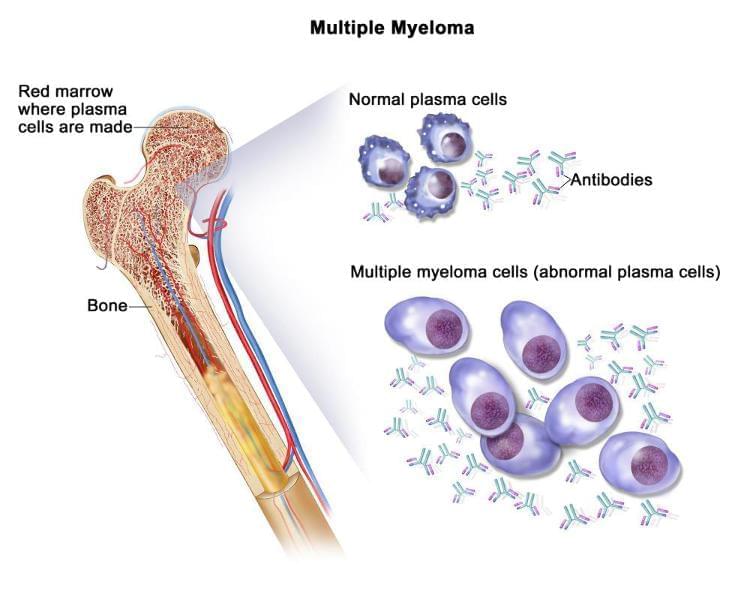
Multiple Myeloma: A Bone Marrow Cancer
Multiple myeloma is a type of cancer that originates from plasma cells in the bone marrow. It is commonly referred to as "bone marrow cancer". In addition to the bone marrow, plasma cell-related cancers called plasmacytomas can also develop in bones and soft tissues.
What Are Plasma Cells?
Plasma cells are normally found in the bone marrow and play a critical role in the body’s immune defense by producing immunoglobulins. In multiple myeloma, these cells multiply uncontrollably, producing defective immunoglobulins that are ineffective in fighting infections. As a result, patients with multiple myeloma frequently experience persistent infections.
Although multiple myeloma is more common in older adults, it has increasingly been observed in young and middle-aged individuals in recent years.
Symptoms of Multiple Myeloma
The primary symptom is lower back pain that worsens with movement. Other symptoms may include:
-
Generalized bone pain,
-
Fatigue,
-
Loss of appetite,
-
Constipation,
-
Dry mouth.
Due to immune system dysfunction, patients with multiple myeloma experience frequent infections. In advanced stages, spontaneous fractures or fractures from minor trauma can occur, along with kidney failure. Sometimes, fractures or kidney failure may be the first noticeable signs of the disease.
Diagnosis of Multiple Myeloma
Patients often visit the hospital due to symptoms such as bone pain or fatigue. If blood test abnormalities are detected, they are referred to hematology centers for further investigation.
Patients with high erythrocyte sedimentation rates should be evaluated for multiple myeloma. In addition to special blood tests, bone X-rays are performed, as bone structure changes frequently occur in multiple myeloma.
If multiple myeloma is suspected, a bone marrow biopsy is mandatory to confirm the diagnosis.
Treatment of Multiple Myeloma
Chemotherapy is the most common treatment for multiple myeloma. In recent years, patients classified as "fit" (those without heart, lung, liver, or other major organ diseases and with good physical activity levels) may undergo stem cell transplantation.
The only curative treatment for multiple myeloma is stem cell transplantation, with the patient’s own stem cellstypically used. However, in refractory cases, stem cells from related or unrelated donors may be required.
A small group of early-stage patients with no symptoms may be monitored without treatment. However, they must be closely observed, and chemotherapy should begin if the disease progresses.
Recently, targeted therapies have also been applied in multiple myeloma, leading to significant positive outcomes.

